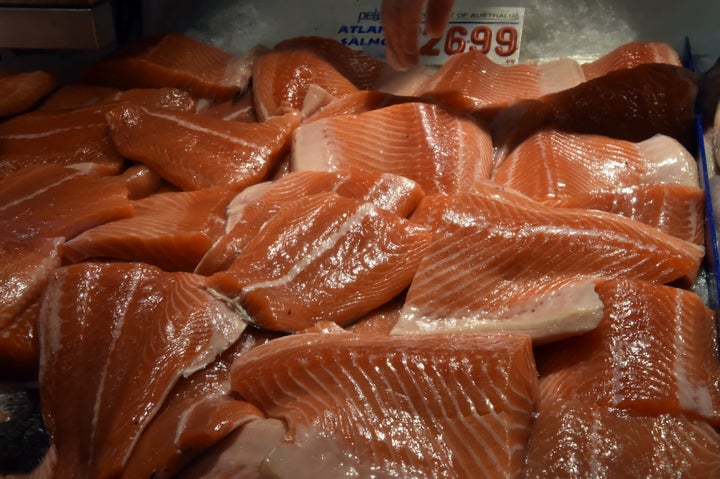
A new report has cast some doubt on the source of high-quality salmon found in America's grocery stores and restaurants.
Oceana, an environmental group focused on protecting the world's oceans, analyzed dozens of salmon samples around the country identified as "wild-caught," a distinction used to differentiate the fish from their farmed, often imported counterparts. The label is generally associated with a higher-quality product that commands a premium.
The group found that 43 percent of the samples it tested were actually mislabeled, and consumers often unwittingly purchased farmed fish.
The news is yet another disconcerting example of seafood fraud that makes its way to the American dinner table. In the past, Oceana has found some 30 percent of shrimp were misrepresented, and 38 percent of blue crab samples, a Chesapeake staple, were actually other crab species found thousands of miles away from the region. Mislabeling has become so bad that President Barack Obama launched a task force to cut back on illegal fishing and fraud.
"More and more consumers are trying to make responsible choices," said Kimberly Warner, a senior scientist at Oceana and the lead author of the study. "For those people that are interested in making a sustainable choice, they want to be able to trust the information they're provided with."
The most common example of fraud Warner and her co-authors found involved "wild-caught" species that are traditionally caught during very specific seasons, like Copper River salmon in the Pacific Northwest. DNA tests revealed many of the fish in this group were actually farmed Atlantic salmon, which some experts have warned can be raised on unnatural diets in cramped enclosures, much like the factory farming of poultry and livestock.
So aside from "Portlandia"-esque demands on food provenance whenever you sit down at a restaurant, what's to be done? Actually, Warner says, consumers should demand to know what their food is and where it comes from.
"Right now, consumers are not given any information if they want to make responsible choices if they choose to do so," she said.
Oceana and the Monterey Bay Seafood Watch program recommend buying fish like you buy produce -- when it's in season. Many wild-caught species are only available fresh at certain times of year, the same way peaches or apples are. And if the price for a filet is too good to be true, it probably is, she added.
"Until we can get traceability for all of our seafood ... I think consumers will have to speak up and have to use common sense," Warner said.
Also on HuffPost:
